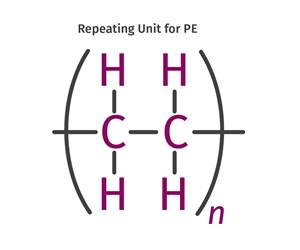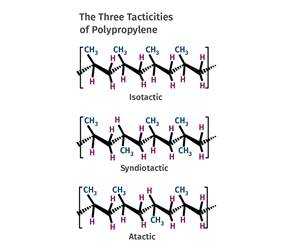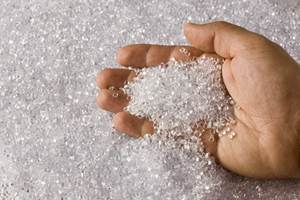Getting the Plastics Message Out to the Masses
As I watched the Olympics coverage the other night, a commercial came on that flashed the word, “plastics.”

As I watched the Olympics coverage the other night, a commercial came on that flashed the word, “plastics.”
While the industry is no stranger to using TV ads in the past—think “Plastics Make It Possible” campaign and TV ads discouraging plastic bag bans—it still caught my attention.
Check it out:
The ad is clearly targeted to the average consumer as the voiceover says its offerings help car owners “save money and reduce emissions.” As I’m sure advertising during the Olympics isn’t cheap so it’s interesting that ExxonMobil chose this particular ad with this specific messaging to convey to the average American consumer what type of work they do.
I found an interview on BrandChannel with ExxonMobil Media Relations Manager Alan Jeffers explaining the strategy behind the campaign. He said that the ad is a continuation of the company’s “Energy Lives Here” campaign that is trying to showcase that it’s not just about selling gasoline for the company but that it’s a “complex, high-tech industry that requires a lot of discipline, a lot of professionals, a lot of very smart, intelligent, engaging people.”
“We are going to continue with the campaign and we think now, more than ever, this kind of communication effort is important. It’s a matter of serious consequence and people want to understand it, they want to talk about it and want to learn more. They’re thirsty for information, so we just see that as a great opportunity to provide a framework into that and that appetite for information,” Jeffers said.
So the overall goal is to spread its message to consumers, not to potential customers necessarily. It shows that B2B advertising is an interesting and complex subject, especially for an industry that doesn’t always have the greatest reputation in the eyes of consumers (thanks to bag bans, trash on the street, you know that story).
Attracting the Next Generation
Another company that threw its hat in the TV advertising arena is GE and in fact, according to an article in the Los Angeles Times, Olympics viewers watched 98% of the GE ad on average, more than any other spot besides one from Folgers among 200 brands that spent at least $500,000 to air an ad during the Games, according to data from ISpot.tv, a company that tracks TV ad impressions.
Here’s one of the ads:
It appears GE is trying to attract younger workers with these TV ads. The company released an ad in September 2015 where a son tried to explain to his parents that his GE job is about “writing code” and not manual labor.
The LA Times quoted Andy Goldberg, the chief creative officer, as saying that the ad successfully attracted the attention of young engineers. Job applications to GE increased eightfold in the months after it was released, the company said.
Olympics As a Trade Show
And while ExxonMobil and GE focused on TV advertising during the Olympics, Dow Chemical, a sponsor of the Olympics took a different approach. Instead of spending tons of money on various advertising strategies, Dow instead took hundreds of its clients to the Olympic Games in Rio so they can see the company’s technologies up close, according to an article in Bloomberg.
The company has more than 20 projects at the game, such as the artificial turf for the hockey field (PT reported about the hockey turf during NPE2015). The Bloomberg article states that Dow is “taking as many as 450 customers on tours of facilities during the course of the games, including the field hockey stadium.”
The publication reported that Dow is on “track to meet or even beat its target of $1 billion in Olympic-related sales for the 10 years through 2020.”
“You’ve been experiencing us and you don’t even know it,’’ Louis Vega, Dow’s vice president of Olympic and sport solutions told Bloomberg. “Dow looks at the Olympics as a large trade show, so customers can see our technology on display.’’
So while ExxonMobil and GE are focusing on education for the general public, Dow went the face-to-face route with its own customers. And even though they might be different strategies, the overall message is clear whether it’s speaking to customers or clients: education about what the industry actually does.
Related Content
The Fundamentals of Polyethylene – Part 2: Density and Molecular Weight
PE properties can be adjusted either by changing the molecular weight or by altering the density. While this increases the possible combinations of properties, it also requires that the specification for the material be precise.
Read MorePrices for PE, PS, PVC, PET Trending Flat; PP to Drop
Despite price increase nominations going into second quarter, it appeared there was potential for generally flat pricing with the exception of a major downward correction for PP.
Read MoreFundamentals of Polyethylene – Part 5: Metallocenes
How the development of new catalysts—notably metallocenes—paved the way for the development of material grades never before possible.
Read MorePrices Up for PE, PP, PS, Flat for PVC, PET
Trajectory is generally flat-to-down for all commodity resins.
Read MoreRead Next
Beyond Prototypes: 8 Ways the Plastics Industry Is Using 3D Printing
Plastics processors are finding applications for 3D printing around the plant and across the supply chain. Here are 8 examples to look for at NPE2024.
Read MoreMaking the Circular Economy a Reality
Driven by brand owner demands and new worldwide legislation, the entire supply chain is working toward the shift to circularity, with some evidence the circular economy has already begun.
Read More
























